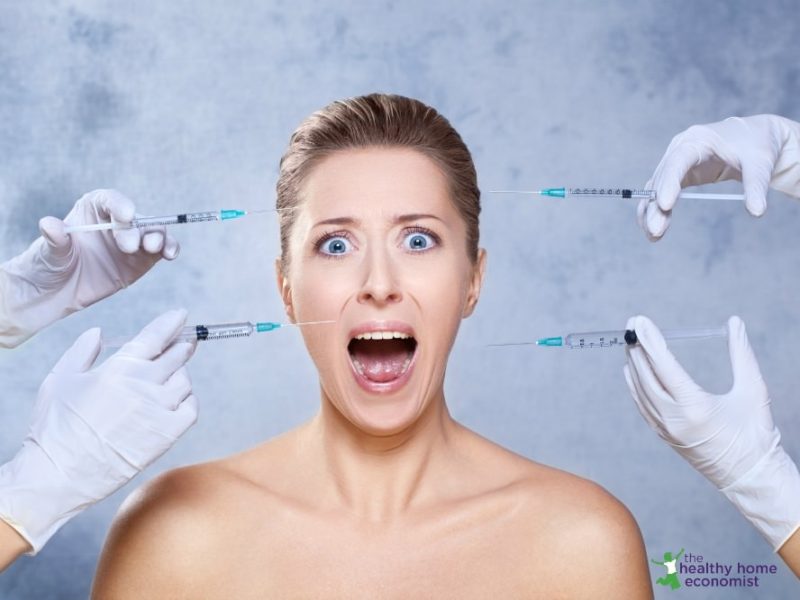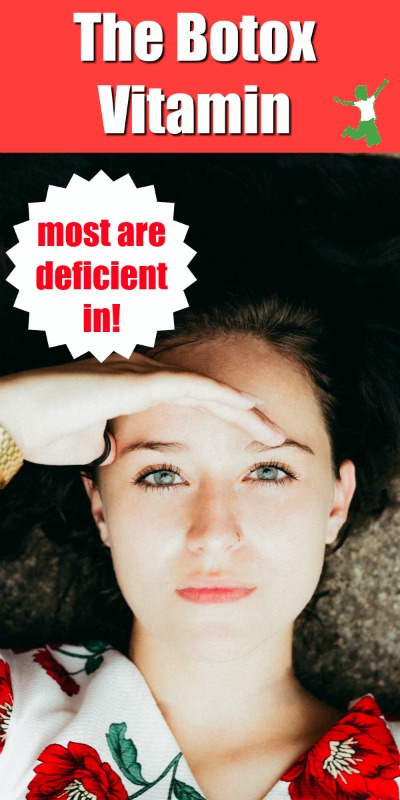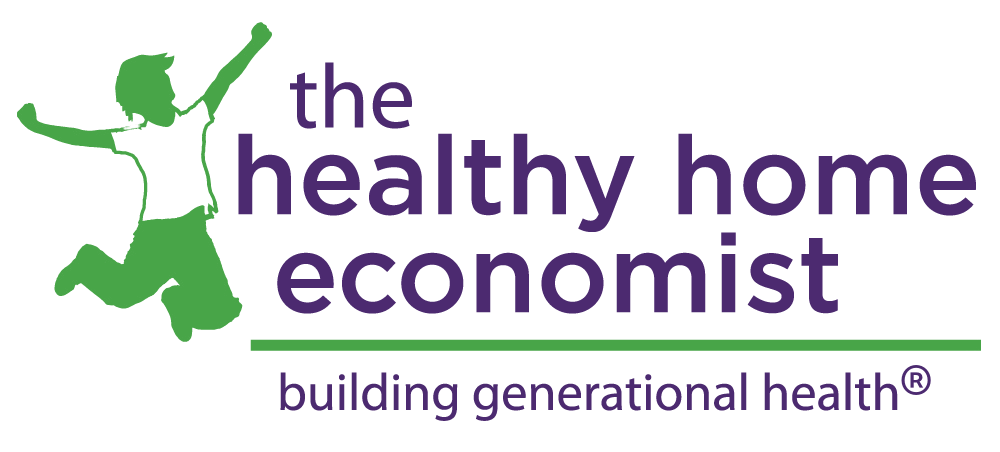Table of Contents[Hide][Show]
The vitamin deficiency that is widespread and most tellingly shows up as excessive wrinkling of the face.

Are wrinkles an inevitable fact of aging, or could laugh lines and crow’s feet potentially indicate a vitamin deficiency or even a more serious underlying health issue?
At a meeting of the Endocrine Society in Boston, researchers presented findings that revealed that women in their 40s and 50s who have extensive skin wrinkling are much more likely than their peers to have low bone mass. (1)
Researchers noted the relationship between wrinkles and bone density in every single bone tested which included hip, heel, and lumbar (spine).
In addition, this relationship existed regardless of body fat percentage and age.
Epidemiological evidence of Asian women offers further health clues to the wrinkle mystery. (2)
It is known that Japanese women have fewer wrinkles and less skin sagging that women of the same age living in North America.
These two groups of women vary greatly in diet and lifestyle, however.
Even when Japanese women living in Tokyo were compared with women from the Asian cities of Shanghai and Bangkok, they showed the least visible signs of aging.
Diet and lifestyle factors for these three Asian groups of women are comparable, except for one notable exception: consumption of natto in Japan.
Vitamin K2. The Anti-Wrinkle Vitamin
Tokyo residents frequently enjoy natto, a strong-smelling food traditionally made from fermented soybeans for breakfast.
Natto is loaded with menaquinone, more popularly known as Vitamin K2, and blood samples of the Tokyo women revealed high circulating levels of this fat-soluble vitamin.
Soy-free natto is also high in K2, as it is the specialty probiotic culture that imparts the nutrient, not the legume itself.
Further research bolstering the notion that getting plenty of anti-wrinkle vitamin K2 in the diet makes for smoother facial features is found in the research of Korean scientists and was published in the journal Nephrology. (3)
The rate at which the kidneys are able to filter the blood is an important measure of overall kidney function.
Researchers found that reduced renal filtration rate was associated with increased facial wrinkling.
What does decreased kidney filtration rate predict?
You guessed it – Vitamin K2 deficiency, according to American research published the year after the Korean study.
90% Deficiency Rate!
Testing has been limited so far on the true extent of Vitamin K2 deficiency in the western world.
However, of the testing conducted so far, a whopping 90% of people are deficient in this critical nutrient.
No wonder botox is such a popular cosmetic treatment!
No surprise that the sacred foods of traditional cultures were some of the highest Vitamin K2 containing foods!
Foods with the Anti-Wrinkle Vitamin
If you want to avoid a vitamin deficiency of K2, know that it is an elusive nutrient and extremely difficult to obtain with a modern diet.
The highest sources of K2 are:
- Natto (fermented soybeans)
- Goose liver
- Certain cheeses (Gouda has the most K2)
- Animal fats like egg yolk, butter, butter oil, ghee, and lard which must come from grassfed animals.
Natto contains 1,103 mcg of K2 per 3.5 ounce/100 gram portion which is far higher than any other food.
The second highest food in Vitamin K2 is goose liver pate which has 369 mcg per 3 1/2 ounce portion.
While delicious and wonderful to eat, goose liver pate is very hard to find in most places. It is also a very high-end, gourmet food, which makes the price out of reach for most.
Rounding out the top 3 foods highest in Vitamin K2 is none other than the humble Gouda cheese, which boasts 75 mcg per 3 1/2 ounce serving!
Brie contains significant K2 as well.
This compares to pastured egg yolks and butter, which each have about 15 mcg of K2 per 3 1/2 ounce portion.
How much of these K2 containing foods should you eat to avoid a vitamin deficiency of this critical nutrient?
That part gets murky as the official recommended daily intake (RDI) of Vitamin K doesn’t distinguish between K1 and K2 despite their very different uses in the body.
The RDI for Vitamin K is only determined by the liver’s requirement for normal blood clotting factors, not the K2 needed for optimal bone and kidney health and wrinkle-free skin.
Thus, getting enough K1 in the diet via leafy greens could still mean a serious deficiency of Vitamin K2.
There is also no solid evidence that the human body is able to convert Vitamin K1 to Vitamin K2, which is what occurs in grazing animals.
The good news is that there is no known toxicity of Vitamin K2, unlike other fat-soluble vitamins.
So, eating generously of Vitamin K2 rich foods as practiced by Traditional Societies and even potentially taking a supplement to avoid a vitamin deficiency is considered wise by Dr. Kate Rheaume-Bleue, ND, author of Vitamin K2 and the Calcium Paradox.
Plant vs Animal K2
Vitamin K2 is available in both animal fats and fermented foods. The animal form is MK-4 and the fermented form is MK-7.
Recent research has shown that emu oil, an Aboriginal sacred food, is extremely high in MK-4, nearly as high as goose liver pate!
This vetted source of pastured emu oil from a genetically pure strain of birds eating their native diet is the type to source.
Some people claim that putting emu oil directly on the skin is also helpful for anti-wrinkling effects. It certainly can’t hurt to try this, but I would not rely on transdermal emu oil alone. Eating high Vitamin K2 foods regularly is crucial.
Note that not all emu oil contains K2…only the fat from pastured birds!
For those who prefer the fermented form of K2 (MK-7), this quality brand offers therapeutic doses of the wrinkle-reducing vitamin from nonGMO natto extract.
As for me, I prefer to get nutrients from food as much as possible. While I will take Vitamin K2 supplements in a pinch, I am currently eating 1-2 tablespoons of homemade natto (MK7 form of Vitamin K2) and 1/2 teaspoon of grassfed ghee (MK4 form of Vitamin K2) every day as my whole food sources. When combined with a traditional diet, this provides about 200-400 mcg of Vitamin K2 per day.

(1) No Joke! Laugh Lines May Reveal Bone Health
(2) Vitamin K2 and the Calcium Paradox: How a Little-Known Vitamin Could Save Your Life
(3) Facial wrinkles as a predictor of decreased renal function
More Information
The Best Vitamin K 2 Supplement
Benefits of Vitamin K2
Macrobiotic Diet and Extreme Vitamin Deficiency
Emu Oil Benefits








I found that chelated copper once a day will turn the hair back to its natural color. It is a copper deficiency that makes the hair gray.
but then too much copper is not good for us either. How do you make sure you get the proper levels?
Regular blood and hair (HTMA) tests, which can get expensive.
Too bad Monsanto and like ruined soy for us all, by genetically engineering it and dousing it in disease-causing chemicals like glyphosate (in Roundup). So realistically, it is very hard for us to get an uncontaminated source of K2. And if we could find it, it would be very expensive.
Grass-fed animals are going out of existence. Also very expensive, thanks to the chemical companies screwing up our food system.
There actually is organic natto. Not all natto is conventional. I have organic natto in my freezer right now. For me, I can eat pretty much anything, but natto was….. almost impossible for me to eat to say the least. But, organic natto does exist. It wasn’t too expensive.
“Diet and lifestyle factors for these three Asian groups of women are comparable except for one notable exception: the consumption of natto in Japan.”
Really? You said that out loud?! What about…
– Dramatically lower sugar intake (horrible for bones, wrinkles and the gut bacteria that make K2)
– Dramatically lower phosphoric acid from soda (directly de-calcifies bones)
– Much more soy (keeps post-menopausal skin more youthful)
– An obsession with keeping white skin / high SPF sun protection (rather than fondness for a tan)
– Dramatically lower dairy intake (correlates with much LOWER osteoporosis, not higher!)
– Much higher fish(DHA, EPA) and seaweed (Iodine) intakes.
…I could go on, and on…
Seriously…the one difference you could think of was eating natto?
Hello Lili,
I enjoyed your comment. I am curious to know if you have any additional info to offer regarding diet and wellness. I am recovering from 30 yrs of the standard american diet and would appreciate hearing anything you may have to share. Thank you much!
You make some very valid points. I agree that one should consider all differences and not just focus on one. I just want to say that, I love this blog and I’m very greatful for all that I have learned from not only the blog posts but also the comments.
Lili, her point was that out of these 3 Asian diets, the difference between these diets was the consumption of natto. She was not comparing the Japanese diet to SAD.
There is no “obsession with keeping white skin”, and tanned skin is actually healither than sun deprived skin which is unnatural.
Natto is high in k2, it has been proven. Women in Tokyo tend to eat it. They have less wrinkles. Not sure what the problem is with that point.
You misunderstood. She did not mean the difference between western women and asian women. she meant the difference between different groups of asian women.
Is it okay if the Gouda was originally pasturized milk?
Not ideal, but ok since the K2 would not be affected by the pasteurization.
K2 vitamin necessary also when you take calcium and vit D3. It allows the calcium to get used for bones and not other wrong places.
You mention goose liver paté as a good source of K2. What about just goose liver? And what about other livers like lambs liver and cod liver, which I consume regularly, not as paté, but fried in the case of the lamb liver and boiled or as oil in the case of cod liver. Do you have any data on the K2 levels in those foods?
i am wondering what the research is on tempeh.. as both natto and tempeh are fermented – are there big differences in natto and k2 present? i love tempeh but not natto! thanks
Tempeh doesn’t have much K2 in it.
Great information. However I am confused by the use of the word “epidemiological” near the beginning. It implies that the evidence gathered is in relation to studies on epidemics but does not mention illnesses etc. Are epidemics in Japan also a factor in their skin or am I reading that paragraph wrong?
Epidemiological evidence has nothing to do with epidemics. It has to do with patterns, causes and effects of health in a defined population.
Thank you Carla, for delving into this much overlooked topic.